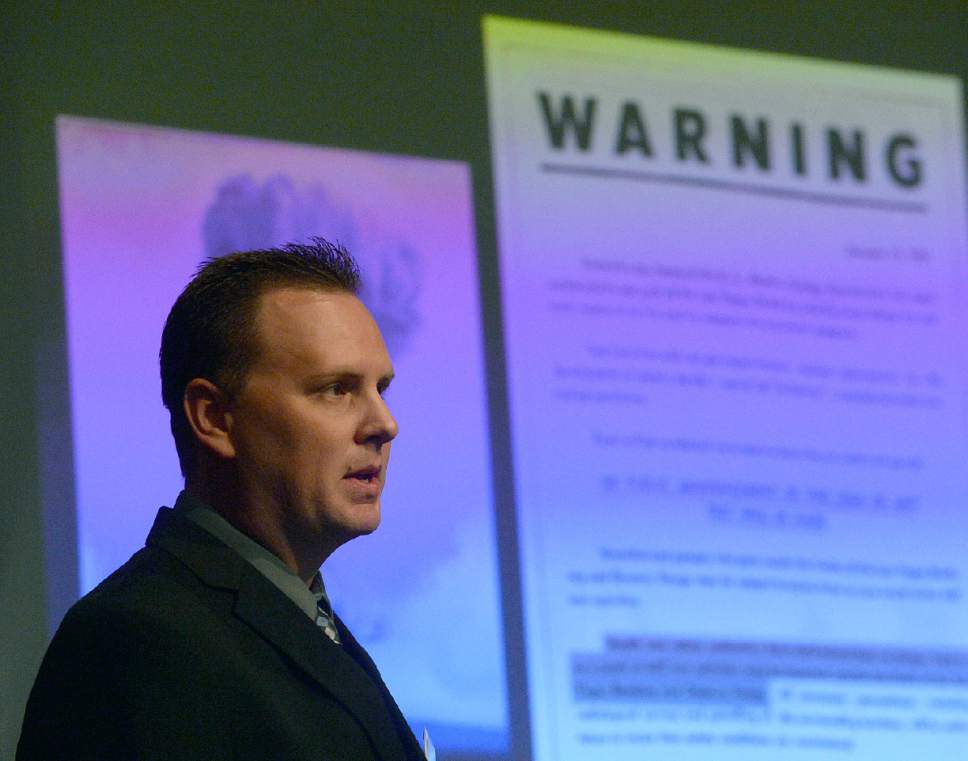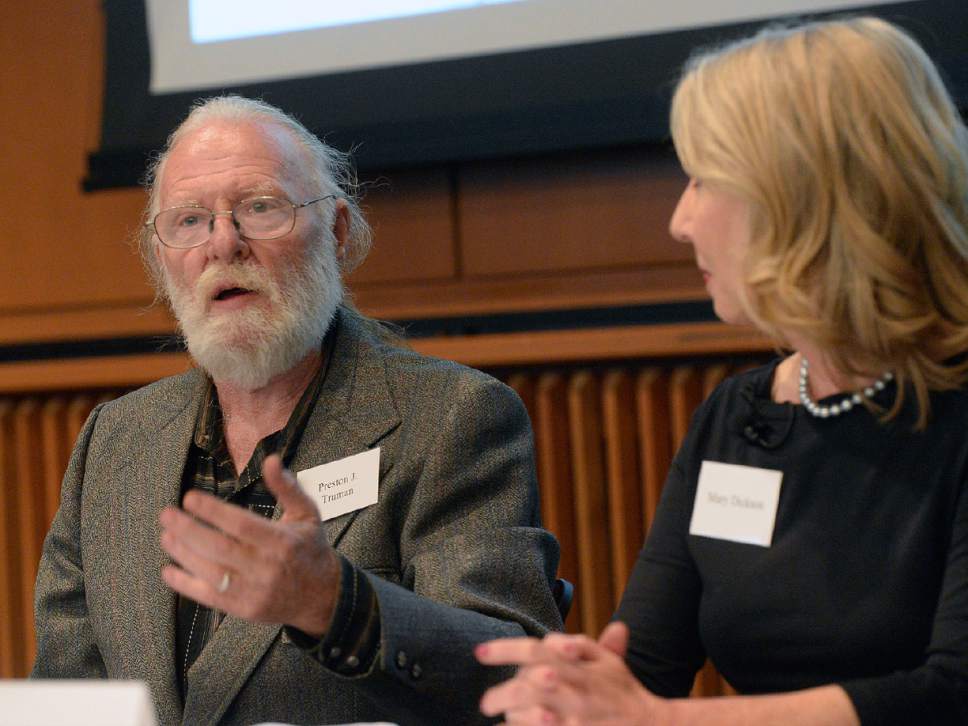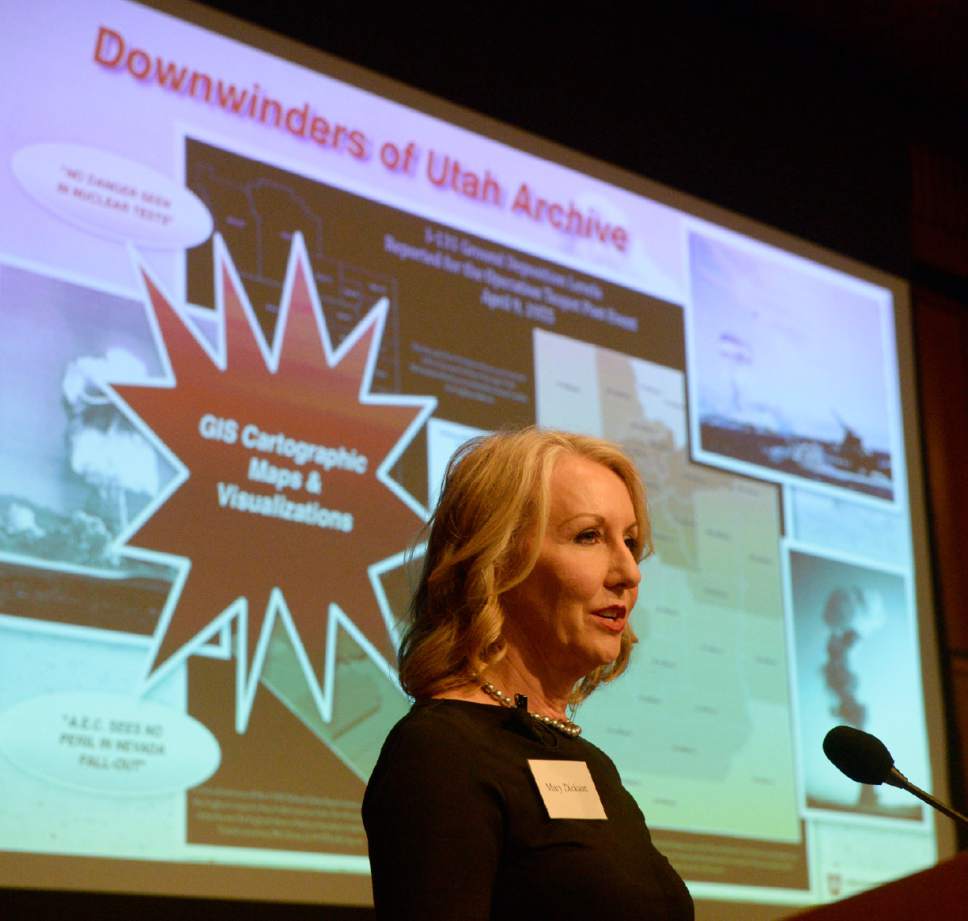This is an archived article that was published on sltrib.com in 2016, and information in the article may be outdated. It is provided only for personal research purposes and may not be reprinted.
A collection of photos, stories and maps showing the downwind effects from nuclear testing done in Nevada in the 1950s and '60s opened this week at a University of Utah library.
The Downwinders of Utah Archive at the university's J. Marriott Library in Salt Lake City includes maps, statistics and recorded stories from people who were affected. It also contains gripping historical photographs of crowds of people watching the testing's huge mushroom clouds of smoke in the distance.
The exhibit's goal: Ensure future generations remember a period of history that led to radioactive fallout that many believe caused cancer and other health issues among people living downwind from the Nevada Test Site in northwest of Las Vegas.
"So many downwinders are dying that we've got to get their stories, or their stories die with them," said Mary Dickson, whose own story is among the oral histories featured in the collection.
Dickson has documented more than 50 people from the Salt Lake City neighborhood where she grew up who have suffered major health ailments she believes are related to the nuclear testing.
"All victories are temporary," she said. "It will happen again if people don't know our history."
Dickson has written, spoken and crafted a play called "Exposed" about her and her sister. She also plans to donate some of her research on the period, which fills a whole office at her home.
Starting in 1951, the U.S. government conducted a series of nuclear tests at that rural Nevada site that were done in the name of national security during the Cold War.
The aboveground atomic bomb detonations that went through 1962 caused radioactive iodine released by fallout to hit 40 states, a 1997 National Cancer Institute study found. The highest exposure was among rural children who often drank milk from cows raised on area farms.
Between 10,000 and 75,000 people were exposed to doses that significantly raised their risk of getting thyroid cancer, according to the study, which took 15 years to complete.
People in 10 southern Utah counties were eligible for $50,000 each in compensation for being "downwinders" under the Radiation Exposure Compensation Program of 1992. The government has paid out more than $1 billion to downwinders around the country under the program, according to U.S. Justice Department figures.
The Utah collection is an important resource and one of several collections around the country that strive to document what happened during a contentious period of U.S. history, said Mary Palevsky, an expert on nuclear testing of the 20th century.
"The whole question of whether and if and how people were affected by testing is controversial," said Palevsky, who led the creation of the Nevada Test Site Oral History Project at UNLV.
"The more documentation there is of the kind Utah's doing, the better it is for all of us because we can then look at these things, read them and thoughtfully come to our conclusions," she said.
Former U.S. Rep. Jim Matheson, a Democrat who spent seven terms in Congress until he stepped down at the end of 2014, has been a longtime advocate for downwinders.
He warns in an online video posted as part of the archive's opening that Americans need to remain vigilant because some U.S. officials still would like to develop more nuclear weapons.
"I'm not saying we should panic, because there isn't a test that is going to happen right away," Matheson said. "But there will always be ... entities that want to move ahead with a new round of testing."













